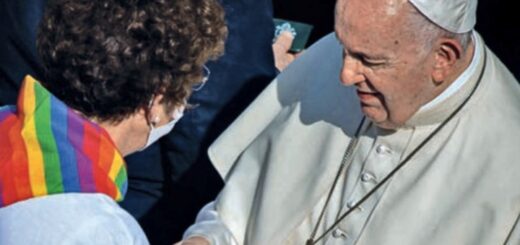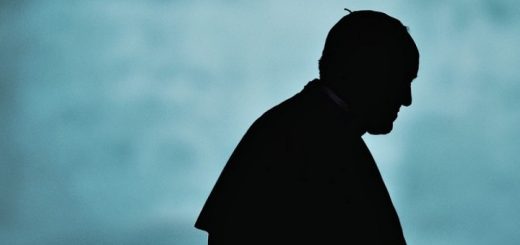L’omofobia tradizionale africana, un mito duro a morire
Articolo di Bernardine Evaristo pubblicato sul sito del quotidiano The Guardian (Gran Bretagna) l’8 marzo 2014, liberamente tradotto da Giacomo Tessaro
L’Africa contiene 54 Paesi e più di un miliardo di abitanti. Una delle leggende più ridicole che la riguardano è quella secondo la quale l’omosessualità non esisteva nel continente prima che l’uomo bianco ve la introducesse. Robert Mugabe [Presidente dello Zimbabwe n.d.t.], che ha definito l’omosessualità “qualcosa di non africano” e “una malattia bianca”, è un assertore di questa teoria.
In the history of the world, humans have always explored and experienced their sexuality; A desire that has never been confined to specific places because it is universal. Yet today the myth of innocence (or, better to say, ignorance) pre-colonial sexual is used to justify anti-gay laws and turn on homophobic persecutions in Africa. In my father's country, Nigeria, in January [2014] a new law has been approved which provides for 14 years in prison for marriage between people of the same sex and up to 10 years for the belonging or promotion of homosexual groups. In Uganda, however, there is a risk of life imprisonment. The responsibility of the continuous persecutions is attributable, in part, to the old-fashioned evangelicals from the United States, but also African political leaders, such as the Gambian Yahya Jammeh and the Ugandan Yoweri Museveni, use anti-gay demagogy to consolidate power and popularity.
Much has been written on this dangerous turning point, little on its origins. Two innovative studies - "Boy Wives and Female Husbands", edited by Stephen O'Murray and Will Roscoe, and "Heterosexual Africa?"? by Marc Epprecht - the arguments of revisionists on Africa and sex demolishing.
L’omosessualità è stata documentata in Africa a partire dal XVI secolo da missionari, avventurieri e militari europei, che l’hanno utilizzata per rafforzare l’opinione che le società africane dovessero essere ripulite dal cristianesimo. I Portoghesi furono tra i primi Europei a esplorare il continente. Notarono la gamma di relazioni di genere nelle società africane e raccontarono della “maledizione contronatura” costituita dal sesso tra uomini in Congo.
Andrew Battell, un Inglese che viaggiò in Africa intorno al 1590, scrisse degli Imbangala dell’Angola: “Vivono come le bestie, perché tra loro ci sono uomini vestiti da donna che alcuni tengono tra le loro mogli”. Il travestitismo è stato documentato in molti luoghi, tra cui il Madagascar e l’Etiopia.
Tra i Pangwe degli odierni Camerun e Gabon i rapporti omosessuali erano comuni tra i maschi di tutte le età: si credeva che, così facendo, si trasmettesse la ricchezza. Per gli Nzima del Ghana era tradizione che gli uomini adulti sposassero altri uomini: le coppie avevano una differenza d’età di circa dieci anni.
La tribù Zande del Sudan aveva una tradizione simile alla pederastia dell’antica Grecia: i guerrieri usavano sposare dei ragazzi pagando la relativa dote ai genitori, come nei matrimoni eterosessuali. Quando quei ragazzi crescevano, diventavano a loro volta dei guerrieri che sposavano ragazzi. Nelle famiglie poligamiche della stessa tribù si praticavano i rapporti saffici.
In the eighteenth century, the Khoikhoi of Southern Africa used the word "Koetsire" to describe the men considered available to homosexual relationships and the word "sister" to describe friendships between people of the same sex in which mutual masturbation was practiced. Homosexuality is recorded between the Siwa of Egypt and in Benin was considered a rite of passage for teenagers. The lesbian marriage complete with a dowry has existed in more than thirty African companies, from Nigeria to Kenya to South Africa.
When is homosexuality in Africa? Perhaps the parietal paintings can be of help: thousands of years ago, the San della Zimbabwe have depicted anal sex between men. The reality is that, as in the whole world, African peoples have expressed a wide range of sexual behaviors. Far from carrying it with him, the Christian and Islamic powers fought to eradicate it and, despising indigenous socio -religious systems, they contributed to the demonization and persecution of homosexuality in Africa and prepared the way for today's taboos.
The protagonist of my latest novel "Mr Loverman", Barrington Walker, is a seventy -four -year -old gay of color. Married to two daughters, he has hidden his homosexuality for 50 years. Shortly after the publication of the book, a young Nigerian wrote to me saying he was afraid that his life could be like that of Barrington.
I didn't know what to suggest to him except that if he wanted to live in the sunlight and in legality as homosexual, he had to leave his country. What else could I tell him? Millions of gays in Africa face the same doubt.
If they remain, or repress their sexuality or risk losing freedom and life. The inheritance of colonialism is alive and Vegeta. As another character of my novel says: "It is homophobia, not homosexuality, that has been imported to Africa".
.
Original text:The Idea That African Homosexuality was a Colonial Import Is a Myth






